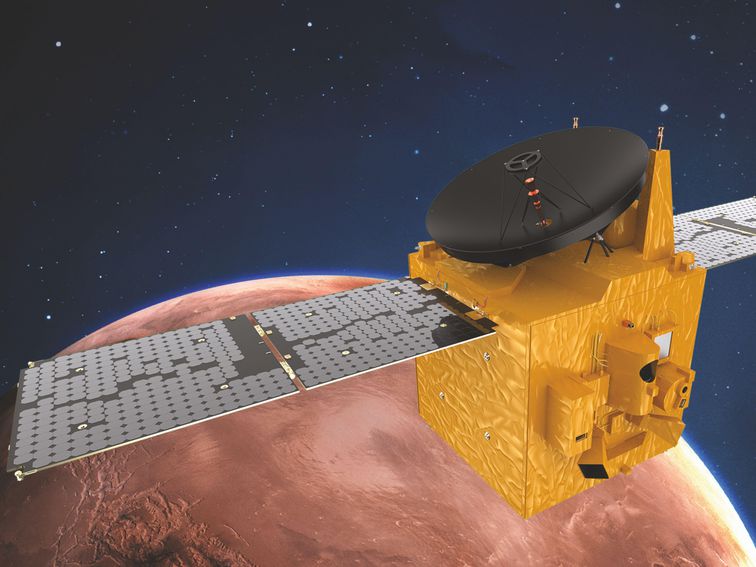
Hope Mars mission: How to watch the UAE make history Tuesday
The Hope probe (Al Amal) will circle Mars on a 55 day orbit, analyzing its atmosphere. MBRSCThe United Arab Emirates will have to wait a little longer to make history with its first interplanetary mission to Mars. On Tuesday, weather conditions forced the UAE Space Agency and the Mohammed bin Rashid Space Center to postpone the departure of Hope, a car-sized probe set to study the Martian atmosphere. Fortunately, the team won't have to wait long. Hope is now scheduled to launch on Friday, July 17 from Tanegashima, a Japanese island in the north Pacific Ocean, within a Mitsubishi H-IIA booster. If you're keen to watch along, we have you covered below.The UAEs space mission, the Arab worlds first interplanetary mission, will launch on Friday July 17, 2020 at 12:43am UAE time (July 16, 2020 at 8:43pm GMT) from Tanegashima Space Center in Japan. UAEGov (@uaegov) July 14, 2020How to watch the Hope probe launch to MarsThe launch from Tanegashima, Japan, will occur on Thursday, July 16, at 1:43 p.m. PT. It'll launch on a Mitsubishi H-IIA booster. The rocket isn't quite as famous as the likes of SpaceX's Falcon 9 or Falcon Heavy rockets, but it does have a great launch history, with over 40 successful launches under its belt, mostly of Japanese satellite systems.The Mohammed bin Rashid Space Centre will carry a livestream of the launch from Japan, which you can watch via this link. Or, tune into the livestream below:One big hopeHope is the first interplanetary mission led by an Arab, Muslim-majority country and, if successful, will add another nation to the list of Martian explorers. "The intent was not to put a message or declaration to the world," Sarah Al Amiri, chair of the UAE Council of Scientists and deputy project manager for the Emirates Mars Mission, told CNET in March. "It was, for us, more of an internal reinforcement of what the UAE is about." The historic launch is set to be livestreamed across the globe. The satellite will study the connections between Mars' lower and upper atmosphere and examine what causes the loss of hydrogen and oxygen into space. It'll collect data for two years after achieving its orbit around Mars in February 2021. There's an option to extend the mission to 2025.Aboard Hope are three instruments which will enable the probe to study the Martian atmosphere more intensely. There's a high-resolution camera known as the Emirates eXploration Imager, a UV imager known as the Emirates Mars Ultraviolet Spectrometer, and a scanning infrared imager dubbed the Emirates Mars InfraRed Spectrometer.
……Space
Tsy 06/09/2020
Hope mars probe
Reply